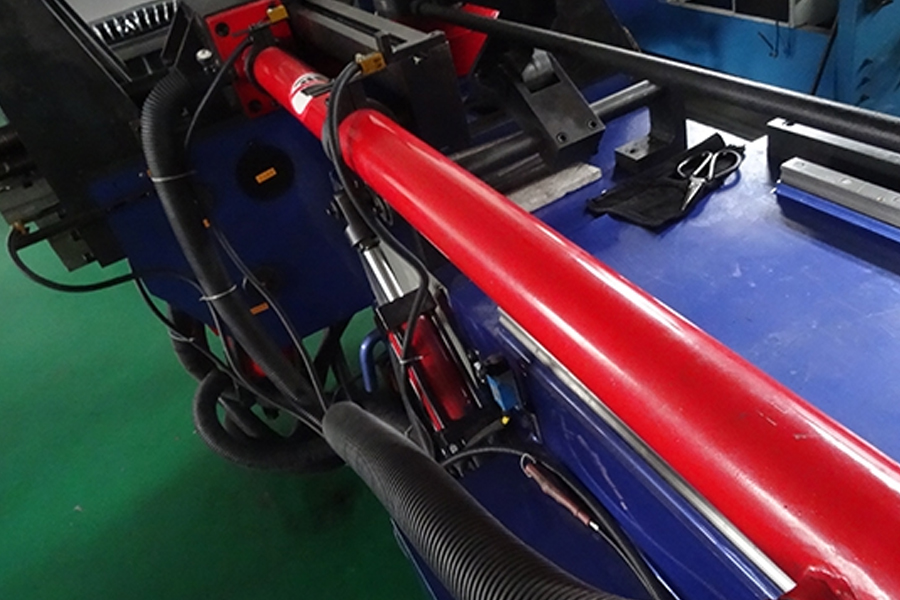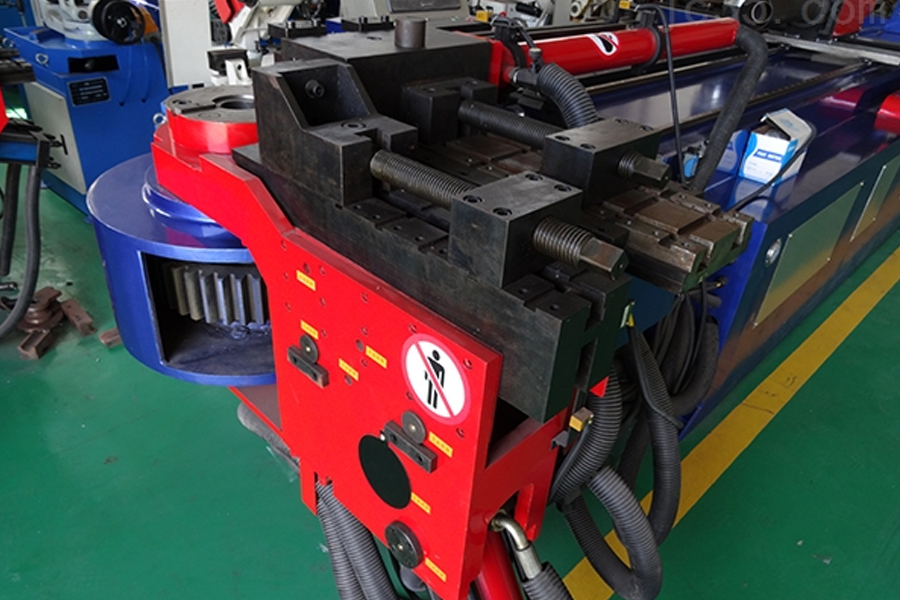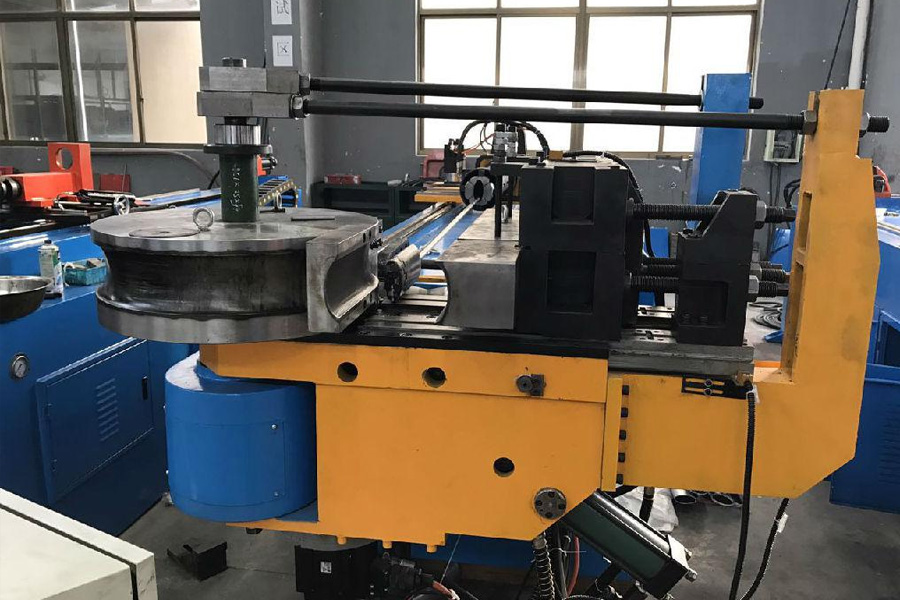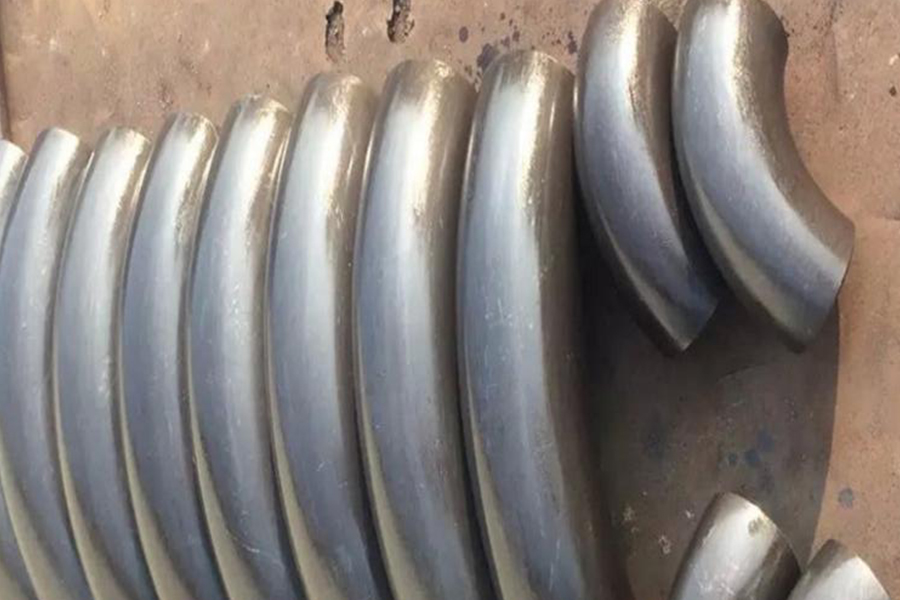The CNC bending machine uses the equipped Mold (general or special Mold) to bend the cold metal sheet into various geometric cross-sectional shapes. It is a sheet forming machine designed for cold-rolled sheet metal processing, and is widely used in sheet bending processing in industries such as automobiles, aircraft manufacturing, light industry, shipbuilding, containers, elevators, and railway vehicles.

CNC Bending Machine
List of Contents
What Is CNC Bending Machine
The cnc bending machine is to use the equipped Mold (general or special Mold) to bend the cold metal sheet into various geometric cross-sectional shapes. The bending machine generally adopts a special CNC system for the bending machine, and the coordinates of the bending machine The axis has been developed from a single axis to a 12 axis. The CNC system can automatically realize the sliding depth control, the sliding left and right tilt adjustment, the back gauge back and forth adjustment, the left and right adjustment, the pressure tonnage adjustment and the slider approaching speed adjustment, etc. . The bending machine can easily realize the slide down, jog, continuous, pressure holding, return and halfway stop actions, and the same angle or different angles of multiple elbows can be bent at one time.
Precautions For The Use Of CNC Bending Machine

Precautions For The Use Of CNC Bending Machine
- Strictly abide by the Huade machine tool workers’ safety operation regulations, and wear labor protection equipment according to the regulations.
- Before starting, carefully check whether the motor, switch, circuit and grounding are normal and firm, and check that the control parts and buttons of the equipment are stuck in the correct position.
- Check the coincidence and firmness of the upper and lower molds; check whether the positioning devices meet the requirements of being processed.
- When the upper slide plate and each positioning axis are not at the origin, run the return-to-origin program.
- After the equipment is started, it runs idling for 1-2 minutes, and moves on the skateboard full stroke 2-3 times. If any abnormal sound or malfunction is found, stop immediately, troubleshoot the malfunction, and work after everything is normal.
- When working, one person should command uniformly, so that the operators and the feeding and suppressing personnel should cooperate closely to ensure that the cooperating personnel are in a safe position before issuing the bending signal.
- When the sheet is bent, it must be compacted to prevent the sheet from lifting up and hurting people during the bending.
- The power supply must be cut off when adjusting the sheet metal die, and the operation should be stopped.
- When changing the opening of the variable lower mold, no material is allowed to contact with the lower mold.
- When working, no one is allowed to stand behind the machine tool.
- It is strictly forbidden to fold the sheet at one end alone.
- If the workpiece or mold is found to be incorrect during operation, stop the machine for correction. It is strictly forbidden to make manual correction during operation to prevent hand injury.
- It is forbidden to fold over-thick iron plates or quenched steel plates, high-grade alloy steels, square steels, and sheets that exceed the performance of the sheet metal bending machine to avoid damage to the machine tool.
- Frequently check the overlap of the upper and lower molds; whether the instructions of the pressure gauge meet the regulations.
- Shut down immediately if an abnormality occurs, check the cause and eliminate it in time.
- Before shutting down, place wooden blocks on the lower molds under the cylinders on both sides to lower the upper slide plate onto the wooden blocks.
- Exit the control system program first, and then cut off the power supply.
The Purchase Knowledge Of CNC Bending Machine

The Purchase Knowledge Of CNC Bending Machine
1.Artifact
The first important thing to consider is the parts you want to produce. The point is to buy a machine that can complete the processing task with the shortest workbench and the smallest tonnage.
Carefully consider the material grade and the maximum processing thickness and length. If most of the work is low carbon steel with a thickness of 16 gauge and a maximum length of 10 feet, then the free bending force does not need to be greater than 50 tons. However, if you are engaged in a large number of bottomed die forming, perhaps a 150-ton machine tool should be considered. Assuming that the thickest material is 1/4 inch, 10 feet of free bending requires 165 tons, and bottomed die bending (corrected bending) requires at least 600 tons. If most parts are 5 feet or shorter, the tonnage is almost halved, which greatly reduces the cost of purchase. The length of the part is very important for determining the specifications of the new machine.
2.Torsion
Under the same load, the deflection of the worktable and sliding block of the 10-foot machine is 4 times that of the 5-foot machine. This means that shorter machines require fewer shim adjustments to produce qualified parts. Reduced shim adjustment and shortened preparation time. Material grade is also a key factor. Compared with low-carbon steel, the load required by stainless steel is usually increased by about 50%, while most grades of soft aluminum are reduced by about 50%. You can get the machine’s tonnage table at any time from the bending machine manufacturer. The table shows the estimated tonnage required per foot of length under different thicknesses and different materials.
3.The bending radius of the part
When free bending is used, the bending radius is 0.156 times the opening distance of the die. During the free bending process, the opening distance of the die should be 8 times the thickness of the metal material. For example, when forming mild steel with an opening distance of 1/2 inch, the bending radius of the part is about 0.078 inches. If the bending radius is almost as small as the material thickness, a bottomed die must be formed. However, the pressure required for forming a bottomed die is about 4 times greater than that of free bending.
If the bending radius is less than the thickness of the material, a punch with a front-end fillet radius smaller than the thickness of the material must be used, and the imprint bending method must be used. In this way, 10 times the pressure of free bending is required.
In terms of free bending, the punch and the die are processed at 85° or less. When using this set of molds, pay attention to the gap between the male mold and the female mold at the bottom of the stroke, and the excessive bending that is sufficient to compensate for the springback and keep the material at about 90°.
Generally, the springback angle of the free bending die on the new bending machine is ≤2°, and the bending radius is equal to 0.156 times the opening distance of the die.
For the bending of bottomed concave molds, the mold angle is generally 86 ~ 90°. At the bottom of the stroke, there should be a gap slightly larger than the thickness of the material between the male and female molds. The forming angle is improved because the bottomed die has a larger bending tonnage (about 4 times that of free bending), which reduces the stress that usually causes springback in the bending radius.
The imprint bending is the same as the bending of the bottomed die, except that the front end of the punch is processed to the required bending radius, and the gap between the punch and the die at the bottom of the stroke is smaller than the material thickness. Since enough pressure (approximately 10 times of free bending) is applied to force the front end of the punch to contact the material, springback is basically avoided.
In order to choose the lowest tonnage specification, it is best to plan for a bending radius larger than the thickness of the material, and use the free bending method as much as possible. When the bending radius is large, it often does not affect the quality of the finished part and its future use.
4.Precision
Bending accuracy requirements are a factor that needs to be carefully considered. It is this factor that determines whether you need to consider a CNC bending machine or a manual bending machine. If the bending accuracy requires ±1° and cannot be changed, you must focus on the cnc machine.
The repeatability of the slider of the CNC bending machine is ±0.0004 inches, and the precise angle of forming must use such precision and a good mold. The repeatability of the slide block of the manual bending machine is ±0.002 inches, and the deviation of ±2~3° is generally produced under the condition of using a suitable mold. In addition, the CNC bending machine is ready for rapid mold assembly. When you need to bend many small batches of parts, this is an indisputable reason for consideration.
5.Mould
Even if you have shelves full of molds, don’t assume that these molds are suitable for the newly purchased machine. The wear of each mold must be checked by measuring the length from the front end of the punch to the shoulder and the length between the shoulder of the female mold.
For conventional molds, the deviation per foot should be about ±0.001 inches, and the total length deviation should not be greater than ±0.005 inches. As for the precision grinding mold, the accuracy per foot should be ±0.0004 inches, and the total accuracy should not be greater than ±0.002 inches. It is best to use fine grinding molds for CNC bending machines, and conventional molds for manual bending machines.
6.Side length of bending part
Assuming a 90° bending along a 5×10-foot low-carbon steel plate, the bending machine must apply an additional 7.5 tons of pressure to lift the steel plate, and the operator must prepare for the 280-pound straight-edge drop. Manufacturing this part may require several strong workers or even a crane. Operators of bending machines often need to bend long-side parts without realizing how hard their work is.
Nowadays, there is a kind of supporting device suitable for workshops engaged in this kind of work. This kind of device can be improved according to the needs of new and old machines. With this device, only one person needs to operate the long-side parts.
The Composition Of CNC Bending Machine

The Composition Of CNC Bending Machine
1.Slider
Slider part: hydraulic transmission is adopted, and the slider part is composed of a slider, an oil cylinder and a fine-tuning structure of a mechanical stopper. The left and right oil cylinders are fixed on the frame, the piston (rod) drives the slider to move up and down through hydraulic pressure, and the mechanical stop is controlled by the numerical control system to adjust the value.
2.Workbench
Workbench part: Operated by the button box, the motor drives the stopper to move back and forth, and the moving distance is controlled by the numerical control system. The minimum reading is 0.01 mm (the front and rear positions have travel switch limits).
3.Synchronization system
Synchronous system: Different from ordinary bending machines, this machine uses servo valves, grating rulers and other hydraulic devices to form a closed loop circuit to precisely control various actions of the bending machine.
4.Blocking mechanism
Stopper mechanism: The stopper is driven by a motor, and the two screw rods are driven to move synchronously through a chain operation. The CNC system controls the size of the stopper.
Operation Method Of CNC Bending Machine
- First, turn on the power, turn on the switch on the control panel, and then start the oil pump, so you can hear the sound of the oil pump rotating, but the machine does not perform any action at this time.
- Stroke adjustment, you must pay attention to adjusting the stroke when using it, and you must test it before bending. When the upper mold descends to the bottom, there must be a gap of plate thickness, otherwise it will cause damage to the mold machine, and the stroke adjustment is also electric quick adjustment.
- For the selection of bending notches, a notch with a width of 8 times the thickness of the plate should generally be selected. If you bend a 4mm sheet, you need to choose a slot of about 32.
- Backgauge adjustment generally has electric quick adjustment and manual fine adjustment, the method is the same as the shearing machine.
- Step on the foot switch to start bending. The CNC bending machine mold is different from the shearing machine. It can be released at any time, and it will stop when you release the foot.
Precision Of CNC Bending Machine

Precision Of CNC Bending Machine
The repeatability of the slider of the CNC bending machine is ±0.0004 inches, and the precise angle of forming must use such precision and a good mold. The repeatability of the slider of the hand-controlled bending machine is ±0.002 inches, and the deviation of ±2~3° is generally generated under the condition of using a suitable mold. In addition, the CNC bending machine is ready for rapid mold assembly. When you need to bend many small batches of parts, this is an indisputable reason for consideration.
Please keep the source and address of this article for reprinting:CNC Bending Machine
Reprint Statement: If there are no special instructions, all articles on this site are original. Please indicate the source for reprinting.:Cnc Machine Wiki,Thanks!^^
